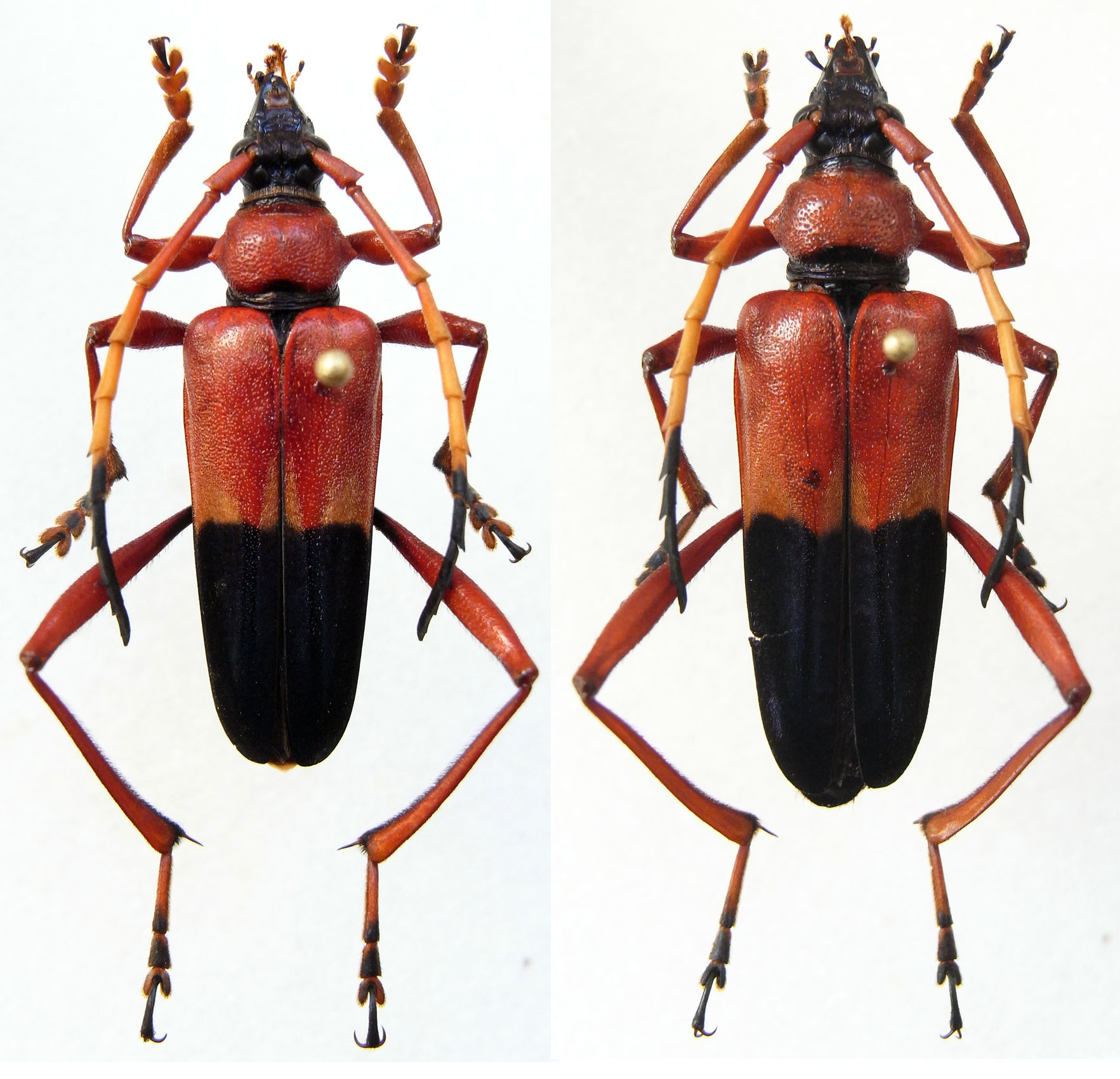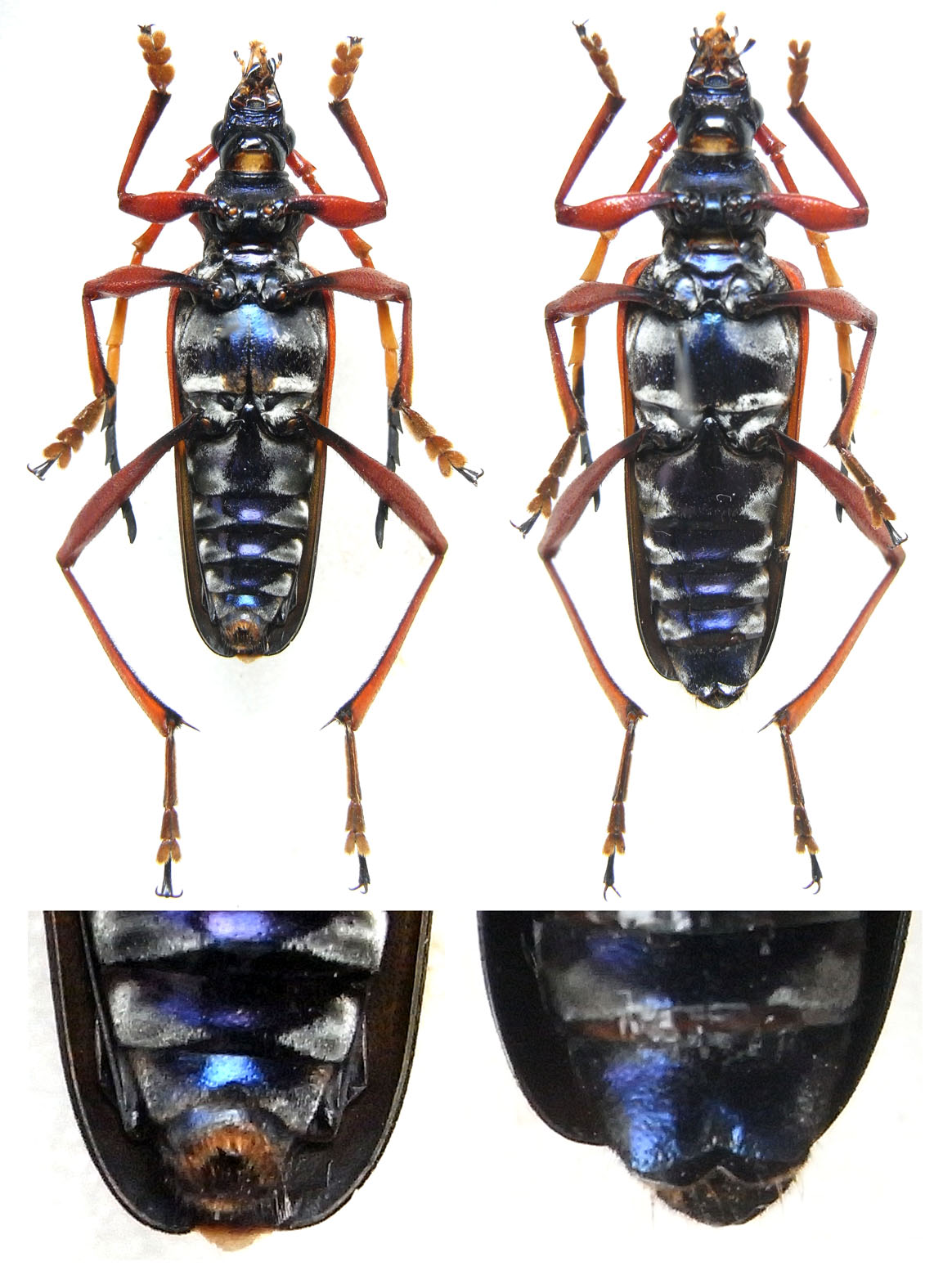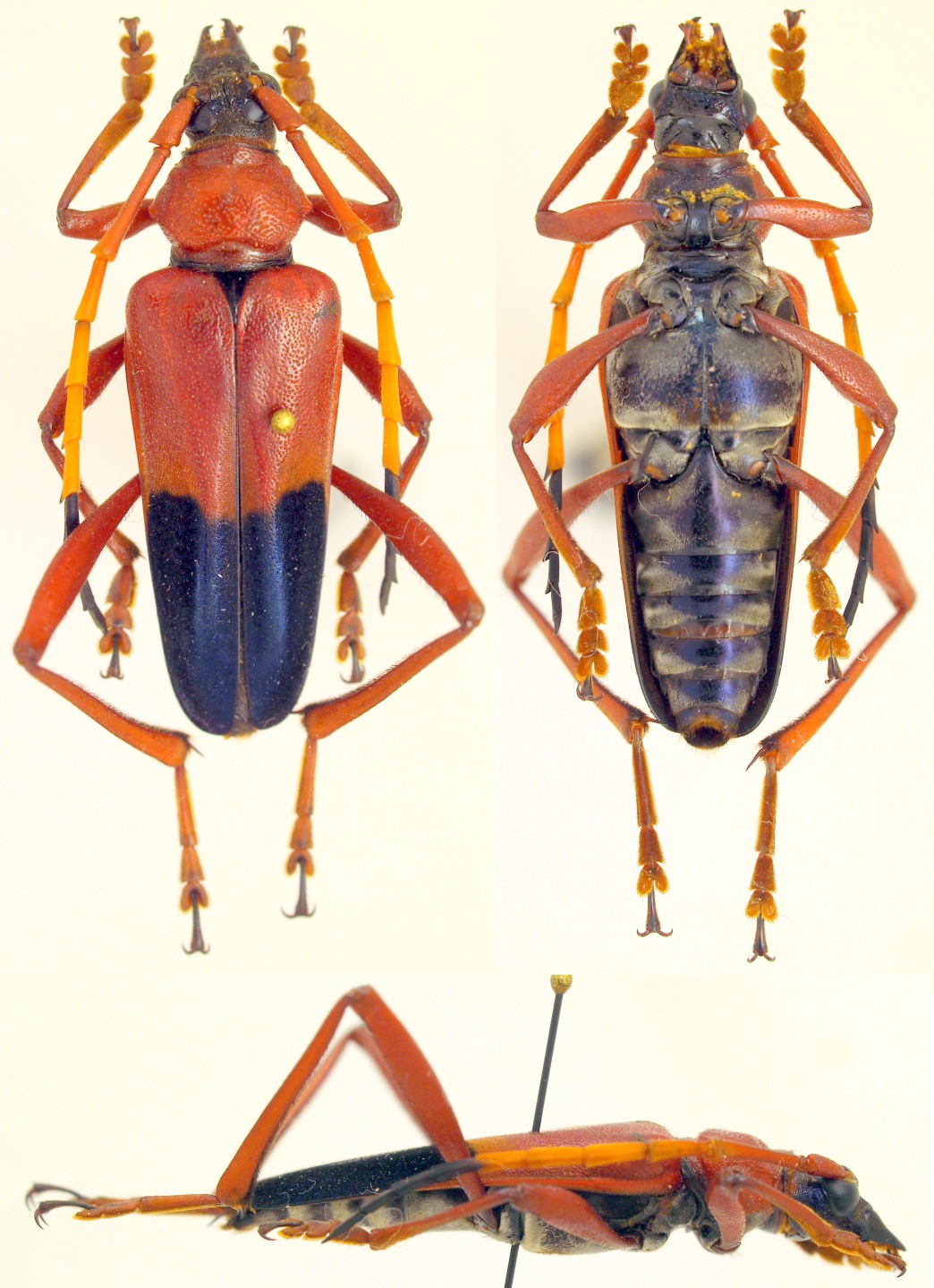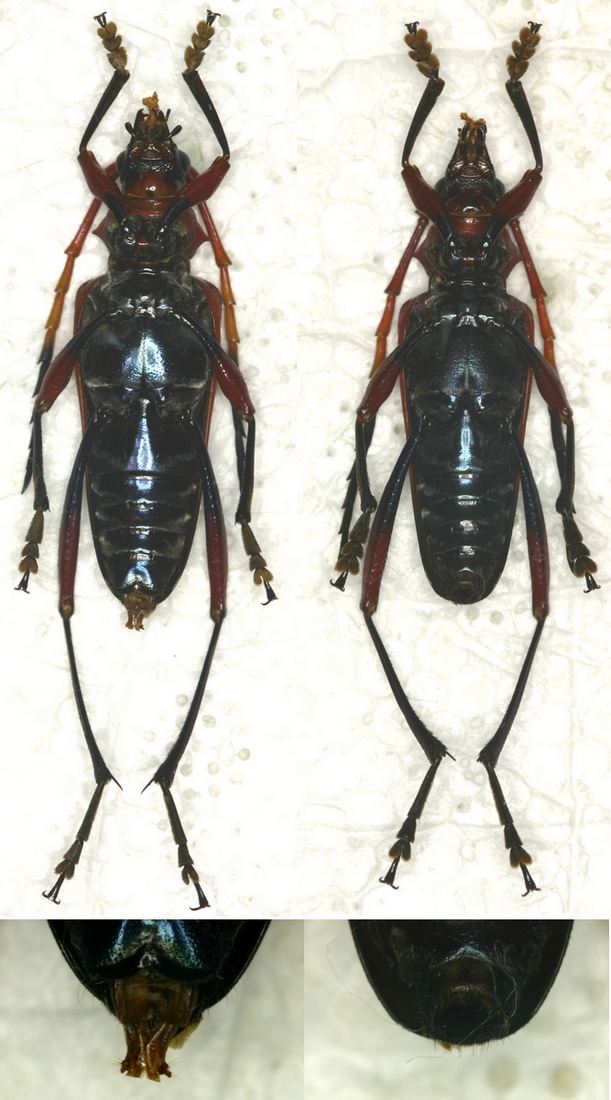| Author |
 Topic Topic  |
|
|
Xavier
Scientific Collaborator
    
France
12519 Posts |
 Posted - 24/10/2018 : 17:24:05 Posted - 24/10/2018 : 17:24:05



|

356.5 KB
29 mm / 32 mm; Laos(Luang Prabang Prov.). Is it Pachyteria diversipes Ritsema, 1890 ? |
Edited by - Xavier on 27/10/2018 17:29:40 |
|
|
Xavier
Scientific Collaborator
    
France
12519 Posts |
 Posted - 24/10/2018 : 19:29:20 Posted - 24/10/2018 : 19:29:20



|
| Length of antenna is shorter than on picture here. |
 |
|
|
Vitali
Member Rosenbergia
   
Estonia
1014 Posts |
 Posted - 24/10/2018 : 21:27:08 Posted - 24/10/2018 : 21:27:08



|
Seems to be a new species |
 |
|
|
Xavier
Scientific Collaborator
    
France
12519 Posts |
 Posted - 24/10/2018 : 21:56:38 Posted - 24/10/2018 : 21:56:38



|
 |
 |
|
|
cerambyphil
Member Rosalia
  
France
676 Posts |
 Posted - 26/10/2018 : 13:26:58 Posted - 26/10/2018 : 13:26:58



|
Hello Xavier, I check my collection and the revision from Morati/Huet (2004) and I conclude it is a new variety of P. diversipes.
It has all the characteristics of the species: The shape and the puncture of the pronotum, the color of antennomeres and elytra, the pubescens ...
The only difference is the black part of the pronotum. It is certainly a local variety which has not been seen until now. Morati/Huet only studied one exemplar from Laos. This new variety is interesting for showing the intraspecific variation of this species.
The length of the antennae is different between male and female. My photo is a male with a very large (across the width) and deep (in a half circle) indentation at the apex of the last sternite; the female (your specimens?) has got a small median indentation at the apex of the last sternite. |
 |
|
|
Xavier
Scientific Collaborator
    
France
12519 Posts |
 Posted - 26/10/2018 : 14:20:21 Posted - 26/10/2018 : 14:20:21



|
Je continue en Français...
Merci pour ta réponse; le problème, c'est que c'est bien un couple que j'ai posté, et le mâle ( à droite) a les antennes plus courtes que le spécimen que tu présentes dans ta clef.
Donc, en excluant P. diversipes... |
 |
|
|
Xavier
Scientific Collaborator
    
France
12519 Posts |
 Posted - 26/10/2018 : 14:45:38 Posted - 26/10/2018 : 14:45:38



|

282.28 KB
La preuve en image. As-tu, Philippe, une photographie de la face ventrale d'un P. diversipes, voire d'un couple, pour argumenter la description ? |
Edited by - Xavier on 26/10/2018 14:54:41 |
 |
|
|
Vitali
Member Rosenbergia
   
Estonia
1014 Posts |
 Posted - 26/10/2018 : 14:58:55 Posted - 26/10/2018 : 14:58:55



|
| The number of black antennomeres is also one of the characters used to differentiate Pachyteria species. This is also different in these specimens... and this is one of the reasons I suggested a new species. Consider also the colour pattern, red legs and the length of antennae. |
 |
|
|
Xavier
Scientific Collaborator
    
France
12519 Posts |
 Posted - 26/10/2018 : 15:19:56 Posted - 26/10/2018 : 15:19:56



|
quote:
Originally posted by Vitali
The number of black antennomeres is also one of the characters used to differentiate Pachyteria species. This is also different in these specimens... and this is one of the reasons I suggested a new species. Consider also the colour pattern, red legs and the length of antennae.
I obviously agree with you. |
 |
|
|
Gerard
Scientific Collaborator
    
France
5441 Posts |
 Posted - 27/10/2018 : 10:15:52 Posted - 27/10/2018 : 10:15:52



|
Bonjour, je rajoute une bête acheter en même temps que Xavier.

384.56 KB |
 |
|
|
cerambyphil
Member Rosalia
  
France
676 Posts |
 Posted - 27/10/2018 : 15:25:54 Posted - 27/10/2018 : 15:25:54



|
Voilà, j'ai enfin trouvé le temps de faire des photos !
En fait Xavier, sur tes couples, le mâle est à gauche. Ses antennes paraissent plus courtes à cause de leur position en arc de cercle. Elles possèdent les 5 derniers antennomères noirs, ce qui est normal pour diversipes (4 à 6 derniers noirs d'après Morati et Huet).
Mis à part la coloration noire du pronotum et du prosternum, je maintiens qu'il n'y a pas de différence avec diversipes.

456.29 KB
Couple avec femelle à gauche et mâle à droite.
origine : Vietnam |
Edited by - cerambyphil on 27/10/2018 19:35:20 |
 |
|
|
Xavier
Scientific Collaborator
    
France
12519 Posts |
 Posted - 27/10/2018 : 17:28:56 Posted - 27/10/2018 : 17:28:56



|
Merci Philippe !
L'exemplaire posté par Gérard confirme que la couleur des antennes est variable, j'en reste donc à P. diversipes. J'ignore si cela vaut le coup de signaler ces variétés, maintenant qu'elles sont visibles ici. |
Edited by - Xavier on 27/10/2018 17:38:37 |
 |
|
| |
 Topic Topic  |
|


